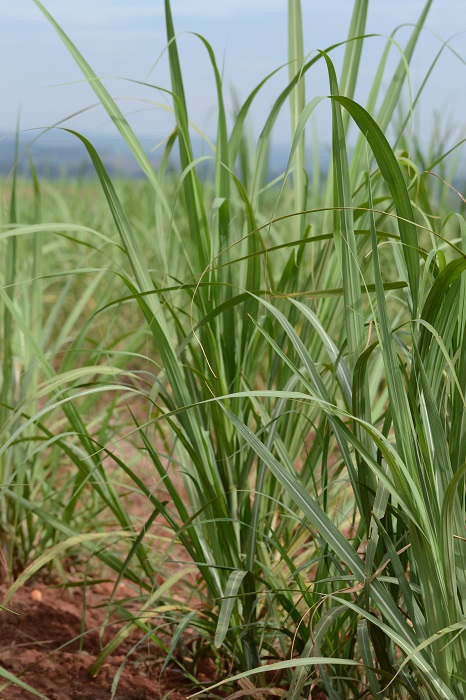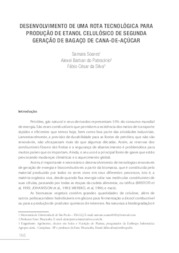Researchers identify gene that can increase efficiency in ethanol production
Researchers identify gene that can increase efficiency in ethanol production
Manipulation of the gene related to plant cell wall hardness should also make grasses more digestible for cattle
A multinational team of researchers from Brazil, the United Kingdom and the United States has identified a gene involved in the hardness of plant cell walls. This is a considerable advance for the production of second-generation ethanol, made from plant biomass. The suppression of this gene increased the release of sugars in up to 60%. The group's discoveries were presented today (8) in the journal New Phytologist. Another practical application of the results will be the development of more digestible grasses with higher nutritional value for ruminants.
Plant biomass has considerable calorific power, but most of this energy is contained in the robust cell walls, an evolutionary advantage that helped forage grasses survive and prosper for over 60 million years.The problem is that such robustness makes digestion in sheep and cattle rumens difficult, and it is an obstacle for ethanol production in biorefinaries.
Global impact
"The impact of the research is potentially global, as all countries use pastures to feed their animals and several biorefinaries in the whole world use this raw material", states Rowan Mitchell, a plant biologist from Rothamsted Research, in the United Kingdom, and co-leader of the team.
Hugo Molinari, a researcher from Embrapa Agroenergy's Laboratory of Genetics and Biotechnology who has also coordinated the study, informs that the sector involves billions. "In Brazil alone, the potential markets for this technology have been estimated last year at R$ 1.3 billion (US$ 400 million) for the segment of biofuels and R$ 61 million for cattle feed. Besides the economic impact, it is important to say that it is a very important discovery for the scientific community", asserts the Embrapa scientist.
Billions of tons in pasture biomass are produced every year, Mitchell observes, and a key characteristic of these forage plants is their digestibility, which determines how economic biofuel production and how nutritional for the animals they will be. The increase in plant cell wall rigidity, or feruloylation, reduces its digestibility.
"Ten years ago, we identifed specific grass genes that were candidates for the control of cell wall feruloylation, but this function has proven very hard to demonstrate, despite many laboratories having attempted it. We produced the first source of strong evidence for one of these previously identified genes", the scientist reports.
The plant transformation team used a transgene to suppress the endogenous gene responsible for feruloylation to about 20% of its normal activity. Hence, the biomass produced became less feruloylated (less rigid in the cell walls) in comparison with a non-modified plant.
The suppression has not shown obvious effects on biomass production or on the appearance of the GM plants with lower feruloylation", Mitchell observes. "Scientifically, now we want to discover how this gene works in the process of feruloylation. Then we could make process even more efficient", the researcher anticipates.
Progress for Brazilian ethanol
The discoveries are going to benefit Brazil, holder of a growing bioenergy industry that uses the residues of grasses like maize and sugarcane as biomass to produce bioethanol.The discovery of the gene will allow the development of plants with cell walls that are more easily broken. The consequence will be an increase in the efficiency of bioethanol production, which will help, in Molinari's assessment, the replacement of fossile fuels and the reduction of greenhouse gas emissions.
"Economically and environmentally, the agricultural sector will benefit from more efficient forage and our biofuel industry will benefit from biomass that will require less enzymes to break it during the hydrolysis process", details the Brazilian scientist.
For the professor of Biochemistry of the University of Wisconsin-Madison and researcher of the U.S. Department of Energy's Great Lakes Bioenergy Research Center, John Ralph, the discovery was long-awaited and hard-earned. "Several research groups have been very close to the protein/gene responsible for feruloylation and [ studies in this area] started about 20 years ago", reports the scientist, coauthor of the paper and one of the pioneers of research in this area.
""Our group has been working on ferulate-mediated cross-linkings in plant cell walls since the early 1990s and has developed magnetic resonance imaging (MRI) methods that were useful in the characterization of this study", Ralph observes. "The discovery of this process was very difficult".
Translation: Mariana Medeiros
Daniela Collares (MTb:114/01/RR)
Embrapa Agroenergy
Embrapa Secretariat of Communications
Press inquiries
Phone number: +55 61 3448-1716
Embrapa Secretariat of Communications
Press inquiries
Phone number: +55 61 3448-2064
Further information on the topic
Citizen Attention Service (SAC)
www.embrapa.br/contact-us/sac/


